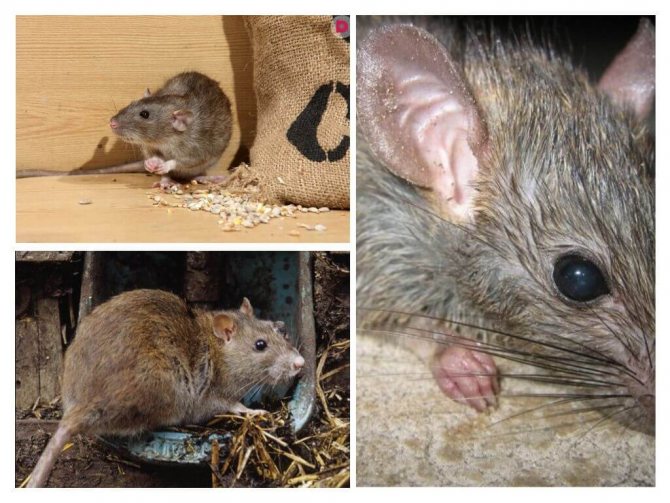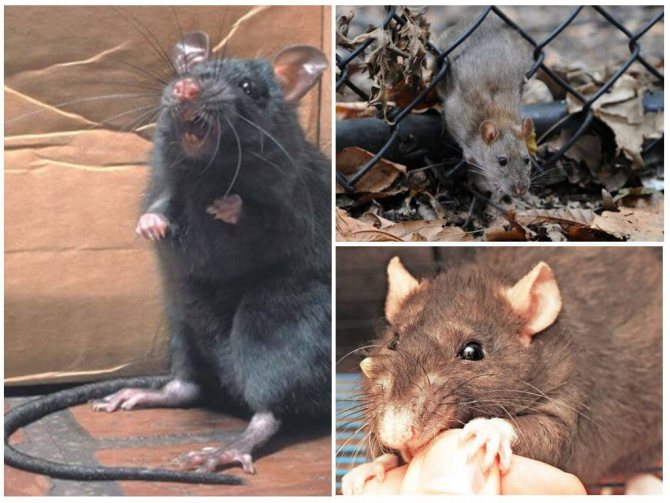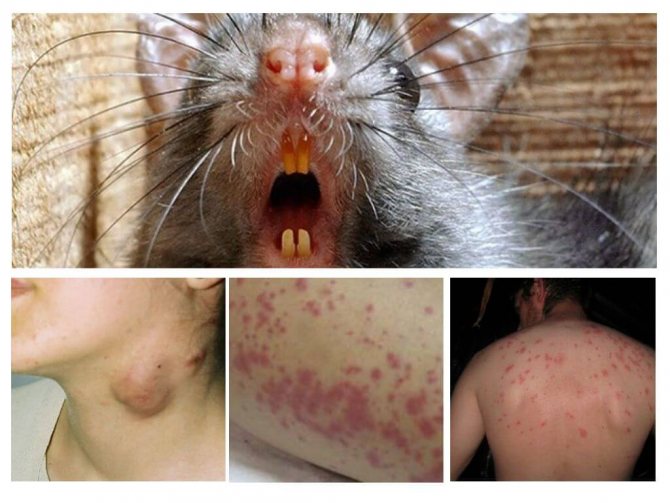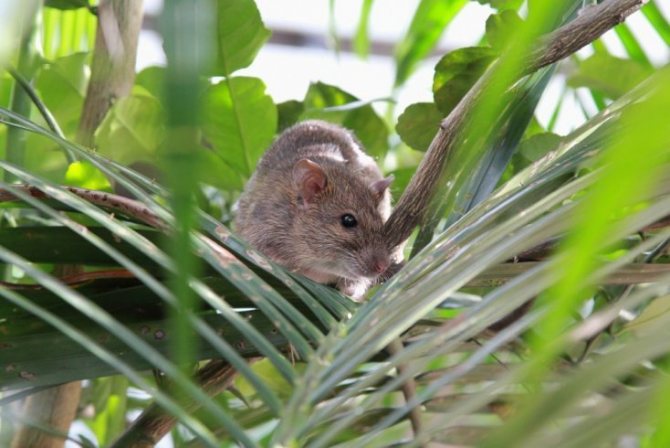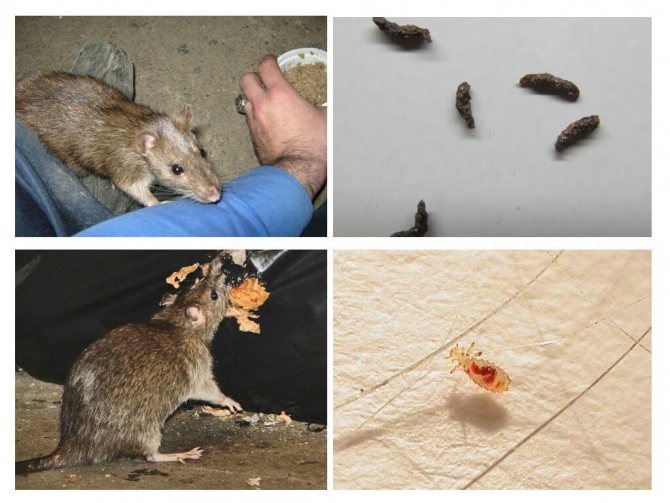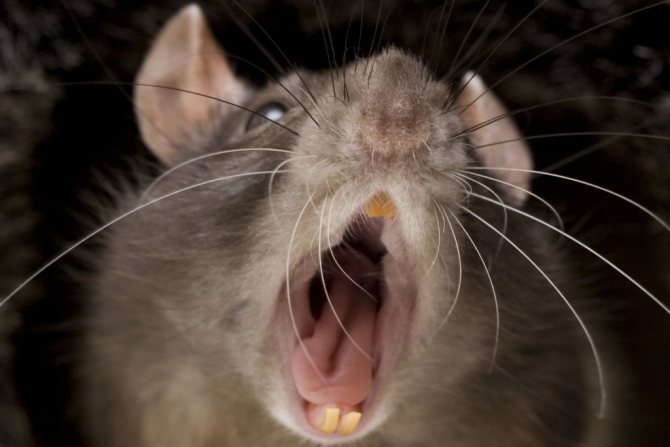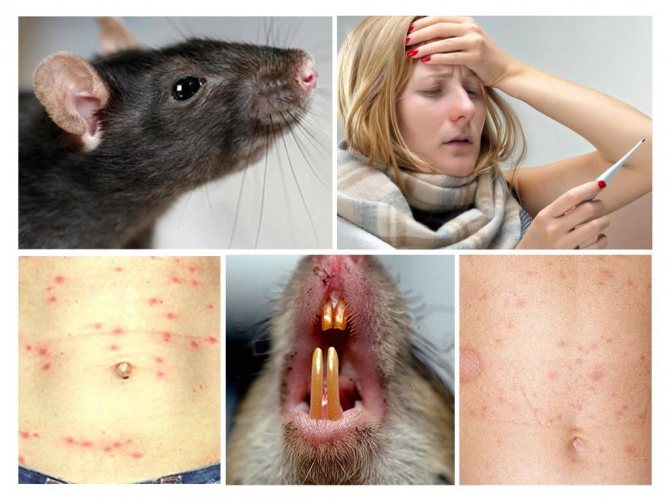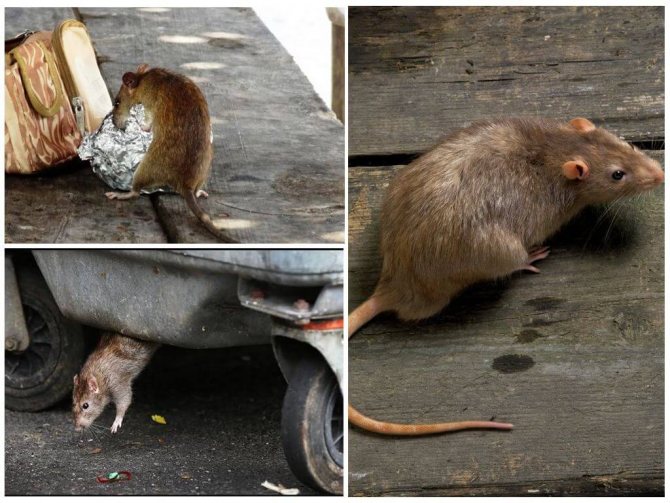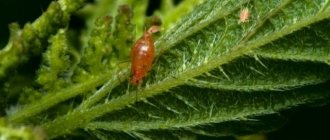Rats are extremely unpleasant and dangerous creatures. They have huge, strong teeth, with the help of which they gnaw through everything in their path, even a concrete wall is not an obstacle to them.
Their appearance in homes is a serious matter, every time it makes you worry, causes a lot of troubles and fears, especially when a child lives there. On top of that, they are carriers of various dangerous diseases and infections. On the skins of tailed creatures, bugs, mosquitoes, fleas feel great, which subsequently move inside human dwellings, on pets.
About the lifestyle and nutrition of rats
Rats are synanthropic and cosmopolitan animals. The latter term means that such rodents are accustomed to urban conditions and populate large and densely populated cities, finding places to live and food. These pests are called synanthropic for the reason that they often settle next to people, therefore they get used to their presence and even learn to interact with them. In most cases, rats are active at night, and one of the reasons for the nocturnal lifestyle is humans. In order not to catch the eye of a person, the rodent watches him, finds out when he is sleeping or leaves, and goes hunting at this time. And this, in fact, means that there is simply no need for rats to attack people in normal and favorable conditions.
But in some cases, rats can show aggression and even behave inappropriately, and because of this, an attack becomes, in principle, possible.
Now it's worth writing about the nutrition of rats. These animals can be safely called omnivorous and even predatory. They can eat plant-based foods such as seeds, plant flesh, cereals, vegetables, fruits, berries, and herbs. But these rodents also need animal protein, so fish, amphibians (lizards, frogs), small animals (mainly rodents) and even birds can be included in the diet. Sometimes such rodents eat carrion for lack of other food. In urban environments, they have to feed on waste. There are also frequent cases of cannibalism, that is, eating representatives of a kind. And such dietary habits also make it possible and quite reasonable to attack people.
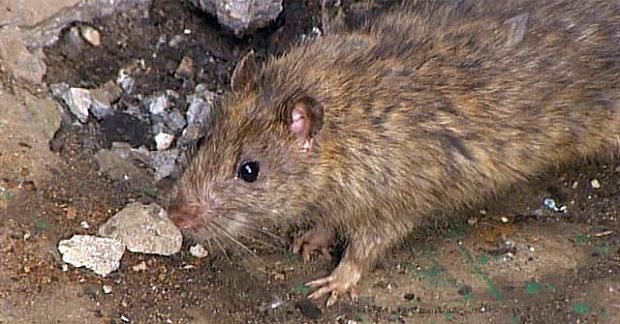
Rats are carnivorous animals that can eat meat
What do they eat
Animals are distinguished by their omnivorous nature. Despite the fact that they love milk and eggs, as well as other goodies, they can eat whatever they find. Lost and blooming products, kitchen towels with food smells are used. They eat soap and washcloths. The main thing is that there is a fleeting smell of food. That's enough for rats.
For the normal development and growth of rat pups and adults, this species requires protein. It is on his search that they spend a lot of time. They love meat and fish. An abandoned sausage or cheese is already a bait that will attract an animal from a distance and lead it into the house from the street or basement. On farms where poultry and pigs are bred, even with excellent harvesting, rodents can be found.
Animals are distinguished by their omnivorous nature.
Cannibalism occurs too. Workers of sewage treatment plants and sewer mines are especially often contacted.
How often do rats attack people?
There are actually a lot of cases of rats attacking people.So, in a large city, where there are several rats for each person (just imagine how many of them live on city streets and back roads!), From 400 to 700 cases of attacks are annually recorded. But these are only officially registered cases. And if we consider that not everyone, after a rodent bite, turns to medical institutions for help, then we can conclude that the number of attacks is much greater.
Rodent lifestyle
Rats are members of the mouse family. This genus of rodents is very common, its various species inhabit all over the globe. Several centuries ago, they were not in the United States, but along with the ships of the settlers, the animals arrived on this continent. Today, there are rats almost everywhere a person lives. The most common are 2 types of these rodents: black and gray.
Perhaps every person has seen gray rats at least once in his life. They are quite large, reaching 30 cm in length, and have very strong teeth. These animals live in basements and basements.
Black rats are smaller, they have lighter bodies and very tenacious fingers, due to which rodents easily arrange nests in attics, mezzanines, suspended ceilings and even trees.
All rats are very fertile, they reproduce at a terrifying rate: the female gives birth to an average of 5 to 20 cubs at a time, and after 18-20 hours she is ready to mate again. That is, for a short life, the rodent increases the population by several tens of thousands of individuals. Fortunately, 95% of young animals die from the cannibalism of their fellows, unfavorable climate or deratization.
Usually pests live in populations of 200-300 individuals. At the same time, they are synanthropic, that is, they live next to a person and learn to interact with him. These pests lack spatial conservatism, that is, they easily master new territories.
Who is most vulnerable to attacks?
Rats are quick-witted and even intelligent animals (it is not for nothing that they manage to survive in the most unfavorable conditions), so most often they attack those whom they consider weak prey. And therefore, children, old people, sick and weakened people suffer more. In addition, prisoners often become victims of rats (there are a lot of rats in prisons, and they often try to take food from prisoners), homeless people living in the habitats of rats and interfering with them, as well as alcoholics.
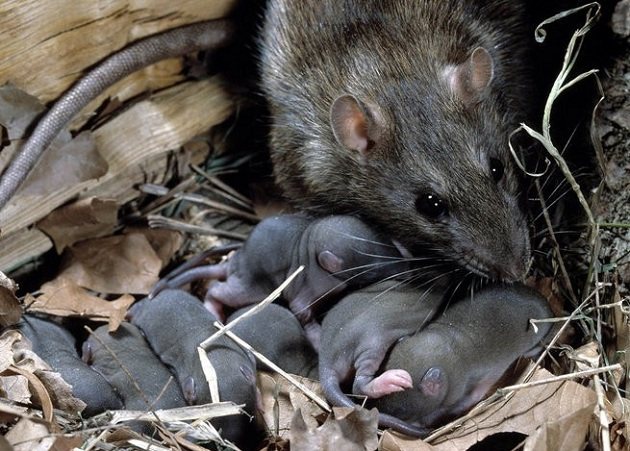

Rats do not attack people often, but such cases do occur.


Rats are among the most difficult and destructive rodents in the entire world. They eat and pollute food, damage property, and transmit parasites and diseases to other animals and humans. Rats live and thrive in a wide variety of climates and are often found in and around homes and other buildings, on farms, and in gardens and open fields.
1. Varieties of rats and their behavior People don't often see rats, but signs of their presence are easy to spot. The most common are two types of rats: black and gray rats, the rest of the species (at least 62 species) live in Australia, Southeast Asia, Oceania.
Brown or sewer rats are burrowing rodents with a stockier body, larger than black rats. Their burrows are located along building foundations, under debris or wooden piles, and in wet areas and around gardens and fields. The nests can be lined with shredded paper, cloth or other fibrous material. When gray rats invade buildings, they tend to stay in the basement or basement. While they usually live at low altitudes, this species can huddle wherever humans live.
Black rats are slightly smaller than gray rats. Unlike gray rats, their tails are longer than their head and body combined.Black rats are agile climbers and usually live above ground in shrubs, trees, and dense vegetation such as ivy. In buildings, they are most commonly found indoors and on upper floors like attics, false ceilings and closets. The black rat has a more limited geographic range than the gray rat, preferring a warmer climate.
>
Video. The rat attacked and killed the pigeon
Retreat. This video shows how a rat attacked a pigeon, most likely she caught him by surprise and dragged him into the bushes. The video was filmed in 2020 in New York.
While the rat is much larger than the common house mouse or meadow vole, young rats are sometimes confused with mice. In general, very young rats have large heads and legs in proportion to their bodies, while in adult mice the proportion is much less. While rats and mice gnaw on wood, rats leave much larger tooth marks than mice.
Biology and life cycle of rats Rats, like house mice, are mostly active at night. They have poor eyesight, but they make up for this deficiency with an acute sense of hearing, smell, taste and touch. Rats constantly explore and study the terrain, memorizing the location of paths, obstacles, food and water, shelter and the characteristics of their habitat. They quickly detect and try to avoid new objects and new food items. Thus, they often avoid traps and baits for several days after their initial placement. While both species avoid new objects, neophobia is more pronounced in black rats than in grays.
Gray and black rats don't get along with each other. The gray rat is a larger and more dominant species and will tend to kill the black rat in combat. When two species occupy the same building, gray rats can dominate the basement and ground floor, black rats will occupy the attic or the second and third floors. Contrary to some beliefs, these two species cannot interbreed. Both species can share some food resources, but will not feed side by side. Rats can grab food and carry it to another location for lunch.
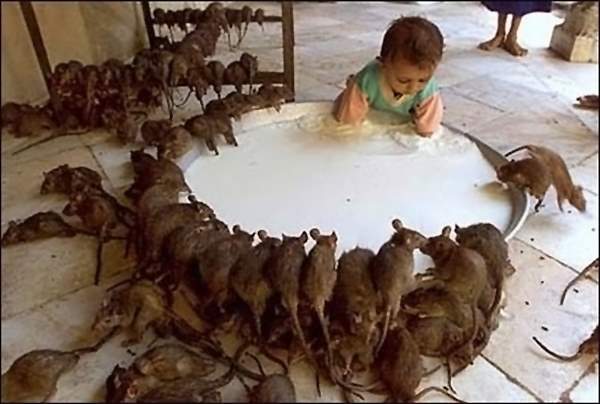

Photo. Gray rats drink milk
Gray rats Gray rats eat a wider variety of foods, but mostly prefer grains, meat, fish, nuts, and some fruits. When looking for food and water, gray rats typically survey 100 to 150 feet in diameter; they rarely travel further than 300 feet from their burrows. The average female gray rat produces 4 to 6 litters per year and each litter has 20 or more pups.
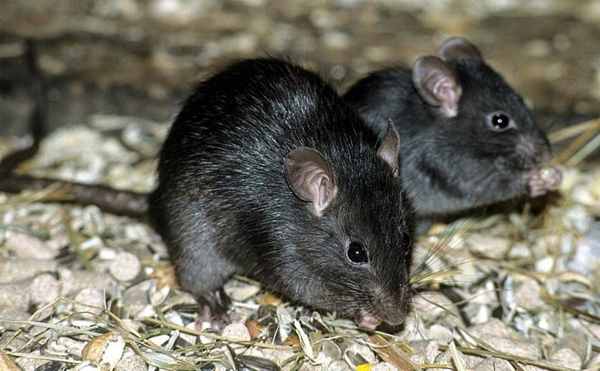

Photo. Black rats
Black rats Like gray rats, black rats eat a wide variety of foods, but they prefer fruits, nuts, berries, slugs, and snails. Black rats love avocados and especially citrus fruits, fruits and often eat what else is on the tree. When they eat a ripe orange, they make a small hole through which they suck out the contents of the fruit completely, leaving only a sunken peel hanging from the tree. They often eat the peel of the lemon, leaving the leftover flesh of the fruit hanging. Their favorite habitats are attics, trees and shrubs or vines. Industrial or residential areas with mature landscaping provide them with a good habitat, as does the coastal vegetation of rivers and streams. Black rats prefer to settle in places above the ground and rarely dig holes for housing.
Black rats regularly travel up to 300 feet in search of food. They can live in landscaping and eat elsewhere. They can often be seen on poles or fences at night. They have a great sense of balance and use their long tails to maintain stability while walking along communal lines. They move faster than gray rats and very agile climbers, which allows them to quickly hide from predators. They can live in trees or in attics and climb down to a food source.The average black rat usually produces 3-5 litters per year with 5-8 pups in each litter.
Rat harm Rats eat and contaminate food and animal feed. They also damage containers and packaging materials in which food and feed are stored. Both types pose a lot of problems as they gnaw on electrical wires and wood structures: doors, cornices, corners, and wall material and insulation, they tear the insulation of walls and ceilings to fit their homes.
Gray rats can weaken the foundations of buildings due to their burrowing activity and can gnaw on all kinds of materials, including soft metals like copper and lead, as well as wood and plastic. If black rats live in the attic, they can cause significant damage by gnawing and nesting. They also harm horticultural crops and ornamental plantings.
Rats can also transmit diseases to humans and livestock, such as mouse typhus, leptospirosis, salmonellosis (food poisoning) and mouse fever.
2. About rat attacks on people Wild rats are synanthropic animals, whose natural habitat is in and around human buildings: farms, cities, sewers, garbage dumps. In cities, feral rats are more common, especially in areas of lower socioeconomic status.
Wild rats bite relatively rarely, even the number of bites is difficult to establish, since information about bites is greatly underestimated. Urban wild rats bite people of all ages, but they tend to bite children more often. Most bites occur at night while the person is sleeping. Rats tend to bite those parts of the body that are exposed during sleep, usually the hands and fingers.
Rat bites are usually not serious: most bites can be simply washed out and the patient can be released immediately. The infection rate from rat bites is very low, around 2%.
Very rarely, rats can transmit diseases such as mouse fever. Rats carry no risk of spreading rabies.
Are wild rat bites common? It is difficult to estimate the total number of wild rat bites since the statistics of animal bites are generally underestimated. Perhaps less than 10% of all bites required medical attention (Strasbourg et al. 1981). One study found that only 41% of the bites were known to the public health authorities (Beck, 1981). Even dog bites are underreported: a Pennsylvania study found that there were 36 times more dog bites among children ages 4-18 than public health officials actually knew (Beck and Jones 1985).
Rat bites are also heavily underestimated. Visits to social service hosts showed that family members generally did not report rat bites (Ordog et al. 1985).
Overall, however, rat bites are believed to be relatively rare, even in areas where rats are common. A survey of 1,363 people in Baltimore showed that nearly two-thirds of those surveyed (64 percent) reported seeing rats on the streets and alleyways, and only 6% reported seeing rats inside residential buildings, and only 1.2% had experienced any the bite of rodents (rats or mice) in their lives (Childs et al., 1991).
Hirshhorn and Hodge (1999) found that rat bite rates in Philadelphia were 2.12 bites per 100,000 people between 1974 and 1984 and 1.39 bites per 100,000 people a year between 1985 and 1996.
Where do wild city rats live? Wild city rats can be found around dwellings, alleyways, sewers and zoos (Childs et al. 1991; Farhang Azad and Southwick 1979). Rat infestations are associated with areas of low socioeconomic status (Davis, 1949; Childs et al., 1991).


Photo. Sydney, Australia, 1900These rat catchers disinfected rats from Sydney to prevent bubonic plague from spreading in the city.
Childs et al. (1998) studied the ecological and social characteristics of the homes of 514 patients who were bitten by rodents (81% of the bites were from rats). The authors found that most of the people who were bitten lived in poor urban areas. These areas were cluttered with various blocks and beams, there was a high percentage of rented dwellings and housing less suitable for living. The population was generally represented by a high percentage of ethnic minorities (excluding Asians), a large percentage of children, and a small number of people over 65.
High-risk areas tended to be near subways, abandoned stations, railways and parks, which are a potential source of shelter and food for gray rats. However, areas near noisy traffic and stations are also characterized by equally abundant rats (Childs et al. 1998).
2.1. Characteristics of rat bites Comparison of men and women Women are slightly more likely to be bitten than men (51.5% of women versus 48.5% of men, Childs et al. 1998; 58% of women and 42% of men, Ordog et al., 1985; 52% of women and 48% of men in 1974-1984, Hirschhorn and Hodge, 1999; 56.5% of women and 42.6% of men in 1985-1996, Hirschhorn and Hodge, 1999).
Age The average age of patients bitten by rats, as a rule, is relatively young.
Hirshhorn and Hodge (1999) studied 622 rat bites reported in Philadelphia from 1974 to 1996. The study showed that rat bites primarily affected children five years of age and younger, as well as people over 75 years old.
Childs et al. (1998) found a range of rat bites ranging from 1 year to 93 years, with the average age of a person bitten being 22 years.
Ordog et al. (1985) found that the average age of a bitten person was 10.8 years, with an age range of 5 months to 42 years. The majority (74%) of those bitten were under 15 years old, while 45% of those bitten were under five years old.
A study of rat bites in Baltimore between 1948-1952 found that 60.5% of the victims were under the age of six. Infants less than one year old accounted for 24.5% of rat bites.
A rat bite study by Richter (1945) in Baltimore from 1939 to 1943 found that 60% of rat bite victims were less than 1 year old.
Race comparison From 1974 to 1996, Hirschhorn and Hodge (1999) found that 50% of rat bite victims were black, 28% were white, and 22% were Asian or Hispanic. Blacks and Hispanics were at high risk for rat bites. In this group, the incidence rate of Hispanics was four times higher than that of blacks.
Socio-economic status Most of the bites were in areas with families living below the poverty line, which also had the highest percentage of unemployed people. There is a strong link between rat bites and poverty (Hirshhorn and Hodge 1999).
Weakness and weakness Ninety percent of the patients who were bitten by a rat were either children or had physical or mental disabilities such as diabetes, mental illness, intoxication, or minor wounds (Ordog et al. 1985).
Video. A huge rat attacks cats
The place where rat bites take place All rat bites occurred in patients' homes (Ordog et al. 1985). Hirschhorn and Hodge (1999) found that 92% of bites occurred in the home (67% in private dwellings, 25% in communal apartments), while the remaining 8% of bites occurred in other locations (e.g. research laboratories and schools).
Hirschhorn and Hodge (1999) found that 53% of rat bites reported between 1985 and 1996 (33% between 1974 and 1984) occurred in residential areas, people were in poor physical condition, and there was unsanitary conditions everywhere. both inside and outside.
Activity of a bitten person Most people were bitten at night while they slept (72%, Ordog et al. 1985; 54.6% Childs et al.1998 year; 86%, Hirschhorn and Hodge, 1999; 100%, Richter, 1945; 80%, Sallow, 1953). One bite occurred when a patient tried to hand feed wild rats (Ordog et al. 1985).
Hirschhorn and Hodge (1999) found that most bites (83%) occurred between midnight and 6 am.
What parts of the body were bitten by the rats? Most of the bites were on the limbs. This is because most of those bitten slept at night. Rats tend to bite the parts of the body that are exposed during sleep: the face, arms, and palms.


Photo. Soldiers show off their catch after 15 minutes of rat hunting in British trenches during World War I.
Ordog et al. (1985) found that 70% of rat bites were on the upper extremities: hand, wrist, palm, or finger. 18 percent were in the lower extremities: leg, thigh, or buttocks. The remaining 12% of bites were on the face. Most of these bites were carried out in places of the body that the person exposed during sleep.
Childs et al. (1998) found that 59.8% of bites were on the upper limb: hand, wrist, palm, or finger. 28 percent were on the lower extremities of the legs: feet or toes, while 9.3% of the bites were on the head, face and neck. The remaining 2.9% of bites were in the rest of the body.


Photo. Rats caught in Germanic trenches during World War I.
Hirschhorn and Hodge (1999) found that 48.3% of the bites were on the hands, 19.6% on the head, 15% on the feet, and 7.1% on the legs.
Richter (1945) found that 48% of bites were committed to the hands and arms, 20% to the face and 19% to the legs and feet, and the remaining 13% to the rest of the body.
Seasonal bites Hirschhorn and Hodge (1999) found that most bites (48%) occurred between May and August.
Characteristics of rat bite wounds 61 percent of the bites were bites only, 14 percent were lacerations (less than 1 cm), 12% were abrasions, 6% were bruises (bleeding into the skin), 5% were bruises (bruises), and 2% were fractures (one the patient had a finger fracture). Twelve percent of patients suffered multiple types of wounds (Ordog et al. 1985).
Treatment and infection Most of the rat bites were not serious. Childs et al. (1998) found that most bites could be simply flushed out and 98% (514 patients) were released immediately. Ordog et al. (1985) studied 50 patients bitten by rats and only one patient (2%) developed a bacterial infection that required the use of antibiotics.
When the bite wounds were washed, only 30% of the wounds tested positive for the bacteria. Of these, 43% were represented by staphylococcus. The rest were: hay bacillus, rhizobacteria, and group alpha hemolytic streptococcus (Ordog et al. 1985).
3. Diseases transmitted by rat bite Diseases transmitted by rat bites are rare. In two studies that examined 514 and 50 patients bitten by rats, no patient contracted the bite (Childs et al. 1998, Ordog et al. 1985).
Very rarely, but a rat can transmit mouse fever (Graves and Janda 2001, Grude 2001, Schurman et al. 1998, Hagelskaer et al. 1998, Hockman et al. 2000, Weber 1982) or cowpox (Marennikova et al. 1988, Postma et al. 1991). Transmission of rabies from rats is very rare and has never been documented in the United States of America. However, several cases of rabies from rat bites have been reported in Poland (Zmudzidsky and Smrekzek 1995, Vintsevich 2002), Israel (Gdalevich et al. 2000), Thailand (Kamoltan et al. 2002) and Suriname (Verlinde et al. , 1975).
All diseases that are transmitted to humans by animals are called zoonoses. And of course, rats can be disease carriers by definition. These diseases can be viral, rickettsial, bacterial, protozoan, or helminthic. To understand what it is, this information is for you.
Bacterial diseases Ratbite: It is not actually a viral disease, but it is often the cause of one of them. Contrary to popular belief, rats do not usually attack humans unless they are cornered or left with an escape route.
There are many cases of rat bites on children and people with disabilities without any obvious cause.This usually occurs in areas where living conditions, due to poor hygiene and environmental health conditions, favor the appearance of rodents.
Death is unlikely to occur from a rat bite, but it can lead to a secondary infection caused by the bite. Tetanus, leptospirosis, and ratbite disease occur regularly.
Another less common disease known as Sadoku, caused by Spirillum minus, is transmitted through the saliva of rats and sometimes mice.
After 3-10 days, the primary lesion leads to swollen lymph nodes, fever, and symptoms of arthritis. If left untreated, up to ten percent of cases result in death.
Salmonellosis (food poisoning) Rats and mice live in areas where food or animal feed is stored, prepared, or sold. They are often contaminated with droppings, urine, or rodent hair containing bacteria that cause disease. The best known of these bacteria is Salmonella.
Hemorrhagic fever They exist in different countries. It may be referred to as Russian encephalitis (RSSE), Central European encephalitis (EEC) and Lassa fever. The aforementioned transmission occurs through food contaminated with urine.
Fatalities can occur in 50% of those infected.
Argentine hemorrhagic fever This endemic disease originated in the north of the province of Buenos Aires, especially in the Chacabuco area, is transmitted by rodents of the genus Calomys, it is very associated with harvesting and harvesting of crops, therefore it is known as "stubble disease", infection occurs through the urine of these rodents. Symptoms: general fatigue, flu-like condition and persistent fever. There is a high mortality rate.
Viral diseases: Lymphocytic choriomeningitis (LHM): First known about it once in 1933, this disease of humans and domestic animals is caused by a virus of the group of arenaviruses (Arenaviridae). The house mouse is the main carrier of the virus. Infected mice usually die, but those that manage to survive and their offspring become hidden carriers of the disease.
Rabies This disease, also called hydrophobia, is one of the most common and usually fatal diseases in humans. It can potentially be transmitted through contact with an infected animal, most commonly dogs. It is very rare for a rodent to transmit the rabies virus by direct infection. In recent years, the disease has spread due to rabies in cattle, transmitted by bats.
About the passion of rats for human blood Of course, we all know that rats are capable of biting corpses. But this is simply because they are scavengers, right? Rats are not picky when it comes to food, everyone knows that. But this is not entirely true. There is one thing that rats seem to love more than anything else and they will risk everything to get it over and over again - that is your blood.
A 22-year study of urban rat bites found that the highest number of bites occurred between midnight and 8 a.m., when the person was sleeping peacefully in bed, not knowing that the rodent was biting him. And this is not an exaggeration, rats most often bite on the limbs and face.
They may bite you once or twice, but it could be an act of self-defense or desperation. This is not the case, as they usually hunt humans. But why? If this is not protection and there are many other foods on earth, why are they doing it?
We have actually already answered you. You might think this is a joke, but it is not. Rats will attack their prey repeatedly because they seriously want blood.
In 1945, Professor Richter conducted a study to see what exactly attracts rats in humans.He gave a group of rats access to large amounts of blood and found that within 24 hours they consumed it, despite the fact that they ate this "food" four times more than they usually eat other foods in a day. In fact, Richter concluded: "rats can develop a real thirst for fresh human blood."
Do you think you can calm them down with milk? But since rats have their own passion and live next to you, it is only a matter of time.
4. What to do if you are bitten by a rat Never let rats bite you, it is really dangerous for your life.
Seriously, rats and other rodents bite unpleasantly, which can lead to serious infection. After a bite, you should always take care of whether the animal has an infection.
Act quickly and observe the patient for at least 10 days.
How to proceed Stay in a safe place. Do not approach wild rats, as a rule, they are more afraid of you than you are of them, but do not count on it too much. If a rat is a pet and someone you know owns it, let them keep you safe. If a rat bites or scratches you, leave it alone.
If the victim of the bite develops any symptoms of the disease, see a doctor immediately.
1. Take universal precautions and carry personal protective equipment, if available.
2. Stop any bleeding, take appropriate action. Avoid using tourniquets unless it is heavy bleeding that cannot be stopped in any other way.
3. After bleeding has stopped, wash the wound with soap and warm water. Clean the wound, making sure to wash off all the soap as it can irritate later on.
4. Cover the wound with a clean, dry bandage. Before that, you can put an antibiotic ointment on the wound. A rat bite often leads to infection. If the injury is to a finger, remove all rings from the injured toe before it swells. Watch for signs of infection:
5. Always consult your doctor. The wound may need to be stitched. Since rat bites are often deep, this gives a special impetus for the development of infection: Redness; Tumors; Heat; The appearance of pus.
6. Wounds on the face and hands should always be assessed by a physician due to the potential for scarring and loss of performance.
7. Rat bites can be contaminated with Streptobacillus moniliformis and Spirillum minus bacteria, which are common. These infections can lead to rat-bite fever. Symptoms of rat bite disease may appear 10 days after the bite and are most likely to appear after the wound itself has healed. Watch for: Fever; Headache; Vomiting; Back and joint pain.
8. 2-4 days after the onset of the fever, a rash may appear on the arms and legs and one or more large joints may become swollen, red and painful.
Advice: 1. Remember that infection is a major concern in any animal bite and especially in rats. Keep the bite site clean throughout the treatment.
2. There is a common misconception that rats are the main source of rabies. In fact, we can get sick from rabies from bats more often than from any other animal. Raccoons are the most likely species to have rabies, followed by bats, skunks and foxes. Transmission of rabies to humans from rodents is extremely rare.
This entry was posted on Friday, March 18, 2020 - 10:11 am. You can leave a comment.
When can a rat attack?
Rats do not just attack if they are healthy and feel normal. Attacks occur in the following cases:
- The rodent is sick with rabies.One of the stages of this disease is characterized by increased nervous excitability, aggression and a sharp reaction to any stimuli. Therefore, a rabid rat may well attack a person for no reason.
- Fright or fear. If you try to catch, drive or drive such a rodent into a corner, then it will first try to escape, and if this fails, it will certainly begin to defend itself and defend itself. Rats can stand on their hind legs and make frightening sounds to let their opponent know that there is a danger. If at such a moment one approaches the animal, then from threats it may well go on to active actions, that is, to an attack.
- Often rats attack when they are driven from occupied habitats. And this is not surprising, because if these rodents find a suitable territory, they can firmly settle there and create a whole colony consisting of several hundred individuals. And if this whole colony is driven away, then for sure the animals will not like it. A few years ago, such a case occurred in Moscow. Rats lived in a department store for many years, but they decided to destroy it. Probably, the rodents were frightened by loud noises, and they ran out into the street and began to attack bystanders.
- Population growth. If the rat population is increasing, then, firstly, rodents may not have enough space and food, and secondly, they may feel strong and fearless. And in these cases, rats cease to be afraid of people, and if they try to drive away pests, they can actively defend themselves and fight for their place in the sun.
- Hunger. Strong hunger can force rats to eat their relatives, which, in principle, contradicts all natural rules and laws. And because of severe hunger and the threat of starvation, a rodent can attack a person in order to get at least some food.
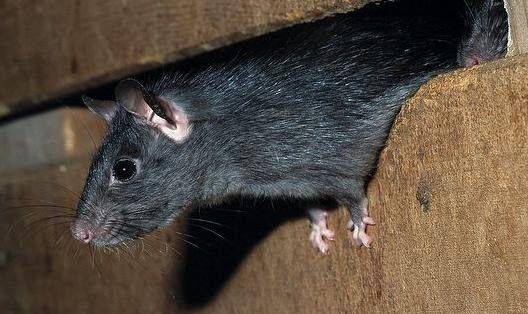

There may be several reasons for the attack
Rat bite transmission diseases
Rodents carry a huge list of various infections and sores that enter the body through the blood vessels. Some of the most serious are:
- Yersiniosis... A terrible poisoning in which the whole stomach is at risk. Throughout the illness, a person feels weak and nauseous. Vomiting can be so frequent that it causes loss of consciousness and general impotence. An early visit to a doctor will avoid the most adverse consequences.
- Leptospirosis... A viral attack occurs, in which the tissues of the renal system and liver are damaged. Death occurred in 15% of cases. But the statistics are given from the number of those who refused medical care or did not apply for it in a timely manner. Symptoms: increased body temperature, debilitating heaviness and pain in the legs, weakening of body functions. These signs of the disease appear 2-4 days after the attack of a toothy rodent.
- Coxiellosis... Loss of appetite, acute spontaneous back pain, persistent cough, as well as insomnia, these are the characteristics of this disease. The temperature rises and the person may start to have a fever. Such infection is difficult to cure and in most cases persists in a person forever, manifesting itself from time to time in acute forms.
Reference! Elephants are most afraid of rats and mice. Cases have been recorded when several rats gnawed the feet of majestic animals and they soon died from infection.
The threat of a rat attack is perfectly acceptable. However, it should be remembered that rodents carry out an attack only in situations that are dangerous to their own lives. A motionless and sleeping person on the street can be considered by a rodent as food, but such cases are very rare.
The attack of the animal does not threaten you, if you do not try to kill it or do not decide to spend the night in a dubious place under the open sky. Well, if ugorazdilo is attacked, then remember that timely medical assistance will help prevent unwanted consequences.
How do rats attack?
Before an attack, rats can take a threatening pose, that is, stand on their hind legs and bared their teeth. Such rodents attack most often in a jump, after which they almost immediately dig into the victim with their teeth or claws. The bite is quite painful. To chase away a rat, you need to try to remove it with your hands or hurt it.
OUR READERS RECOMMEND!
To get rid of rodents, our readers advise scarer Pest-Reject
... The operation of the device is based on the technology of electro-magnetic impulses and ultrasonic waves! Absolutely safe, ecological product for humans and pets. Read more here ...
What to do if bitten by a rat?
The most dangerous rat bites are those produced on the neck or face, since here the blood vessels are located closest to the skin, due to which the infection penetrates the body quickly. Therefore, the problem must be solved as soon as possible.
Rat bite treatment
First aid should be carried out as follows:
Thoroughly wash the wound with a liquid solution of laundry soap (at least 5 minutes for superficial wounds, 10 minutes for deep ones). The procedure is best done under pressure; a small syringe or enema is ideal for this.
When blood oozes from a wound, it is very good, thus dirt and bacteria are washed out from there.
Upon completion of the soap treatment, it is necessary to disinfect the bite site with peroxide, chlorhexidine, or you can take furacilin. Go around the edges with iodine. The next step is to apply a sterile antibiotic dressing and see a doctor immediately.
If you find signs of pest control on your pet, it is also important to give it immediate first aid, treat all wounds, and then show it to the veterinarian. And it is recommended to carry out the appropriate vaccination of the pet in advance.
Rat bite transmission diseases
Anyone should be aware that when a rat bites him, he risks getting from it about twenty pathogens of terrible diseases. The main ones include:
- listeriosis;
- leptospirosis;
- melioidosis;
- toxoplasmosis;
- k-fever.
Also, you can get two types of terrible infections: rabies, tetanus. All of these diseases are extremely dangerous and can be fatal.
Our users recommend


Are Attacks Dangerous?
Deaths from rodent attacks are rare, but have been reported. Death is possible in the case of the helplessness of the victim, or a large number of attacking rodents. But the danger may lie elsewhere. It is worth remembering that rats carry dangerous infectious diseases such as tularemia, typhus, rabies, Q-fever and many others. And if a rodent bites through the skin, bacteria or viruses can easily penetrate the bloodstream, which will provoke infection. In addition, the bite can lead to sepsis, which is also very dangerous.
Remember the danger of attacks and try not to come into contact with rodents, and even more so not to provoke them to take action.
Health hazard
The danger of a rat lies not only in damage to property, destruction of food supplies, rodents spread more than 80 terrible diseases. Rats are found in places that are far from meeting hygienic and sanitary standards. Basements, cellars, garbage cans, abandoned buildings, tunnels. Regardless of the type of rat, they are all dangerous to humans. Every day, rats carry many pathogens, bacteria, fungi.
The diet includes a variety of products - from sugar with flour, to meat of wild animals, dead meat. The decaying body is full of viruses, bacteria, parasites. All this rats drag with them to the person.
On a note!
Viruses do not infect animals. Being carriers of dangerous diseases, the animals themselves feel great.The infection is transmitted through a rat bite with saliva, by contact, rat droppings, exhaling with air. Pets are often the intermediaries. They become infected themselves after contact with rodents, infect humans.
The dangers of rat attacks
However, for whatever reasons rat attacks on people, the main dangers of these attacks are always the same: if the animal bites, there is a high risk of contracting serious diseases, primarily sodoku and tetanus.
It is relatively easy to treat Sodoku, but without therapy it is deadly (its mortality in untreated form is 10%). The disease is accompanied by severe muscle pain, high fever, anemia and exhaustion of the body.
The dangers of tetanus are well known: among its consequences are paralysis, nervous disorders, pneumonia, and in severe cases, death. Even with the use of modern medicines, the mortality rate of the disease is 17-25%, and in remote areas 9 out of 10 people die from it.
If a tetanus pathogen gets under the skin when bitten, then the development of the disease is likely.
Meanwhile, rats do not tolerate rabies, and infection with sodoku or tetanus during attacks of rodents is relatively rare. In general, the probability of contracting any disease with a rat bite is about 2% - this is a sufficient reason to avoid such an attack, and after that - see a doctor.
Another danger of rat bites is, in fact, injury. According to statistics, after the attacks of these animals, the victims are left with:
- Damage to soft tissues, typical for rodent bites - in 61% of cases;
- Laceration wounds - in 14% of cases;
- Abrasions - in 12% of cases;
- Bruising without damage to the skin - in 6% of cases;
- Hematomas - 5% of the consequences of bites;
- Finger fractures - 2%.
Often, with one attack of the animal, a person receives several different injuries at once.
Statistics were collected based on an analysis of about 500 rat attacks on humans. At the very least, she shows that these animals are strong enough and can leave serious wounds on the human body.
Human behavior when bitten
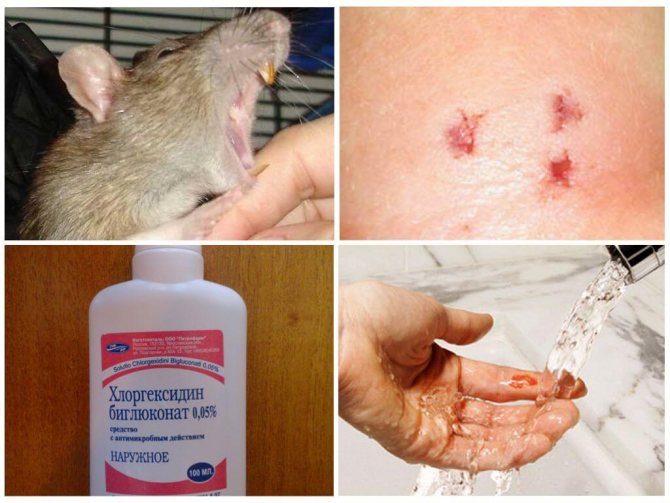

Rat bite
The greatest likelihood of being attacked by rodents is in their habitats: landfills, garbage dumps, basements, etc. Some people themselves can provoke an attack by threatening animals with a stick, waving their arms or, conversely, showing their fear.
You should never chase a fleeing animal and try to catch it, because rats in an aggressive state can attack unexpectedly, pounce and inflict many bites at once.
The rat bites deep enough through the skin, thanks to its long lower incisors. Most likely bite sites: lower and upper limbs. Bites to the neck or upper body, where there are many blood vessels, are especially dangerous, through which the infection quickly spreads throughout the body.
Important!
According to statistics, there are cases when rats not only injured with their teeth, but also bit off a person's ear, broke fingers and caused other injuries. In impressionable people, a phobia or a nervous breakdown may begin from fear during a rat attack, which will then affect his whole life. Especially often, negative consequences are manifested in children.

